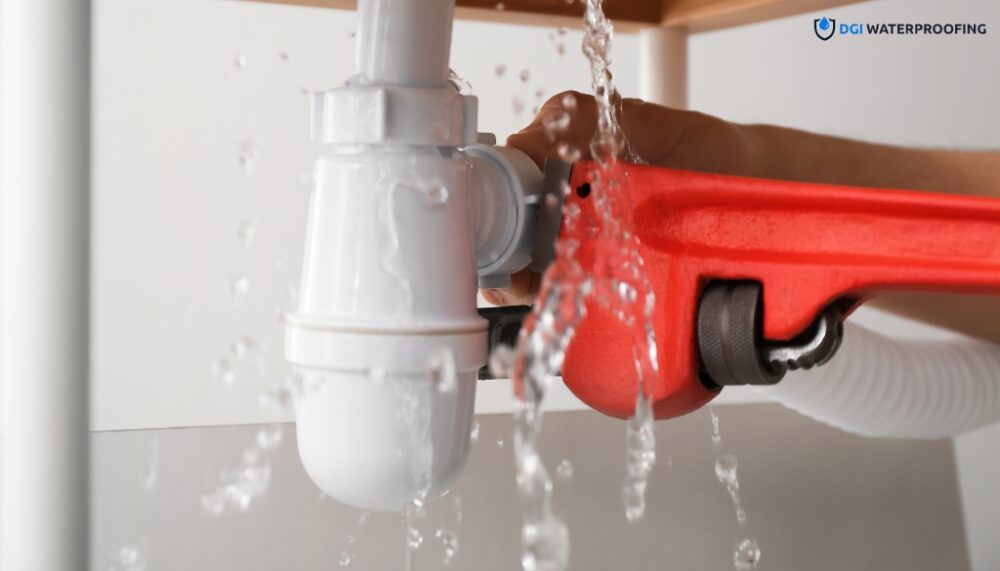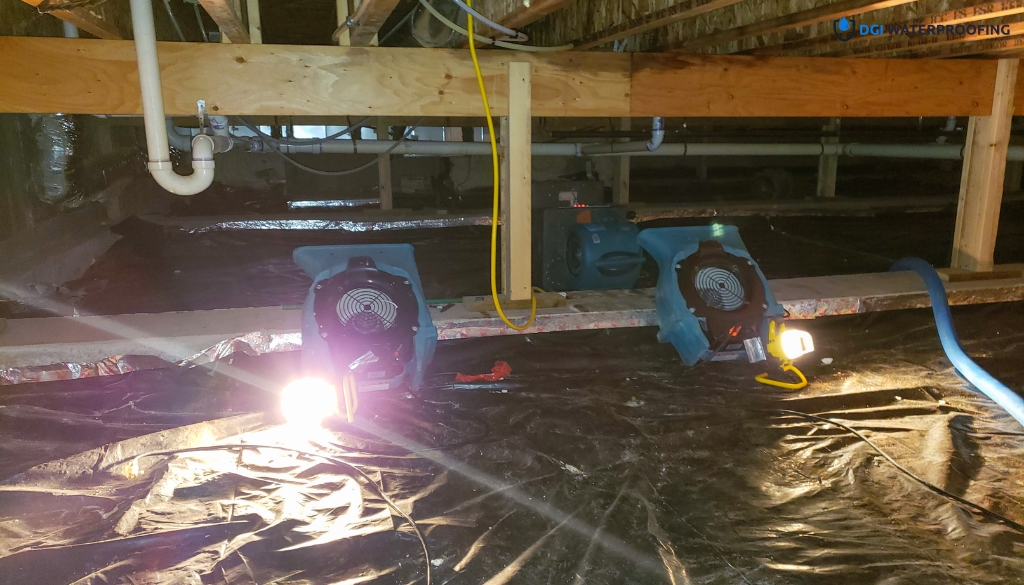Moisture in crawl spaces can lead to a host of issues, including unpleasant odours, mould growth, structural damage, and unhealthy indoor air quality. As homeowners, it’s essential to take preventative measures to protect your home’s foundation from moisture-related problems. In this expert guide, we will provide you with simple and effective techniques to prevent moisture in your crawl space.
Understanding the Importance of Moisture Control in Crawl Spaces
If you own a home, it’s crucial to understand the significance of moisture control in crawl spaces. A crawl space is the area underneath your home that provides access to plumbing, wiring, and ductwork. This space is susceptible to moisture intrusion, which can lead to various problems, including mould growth, structural damage, and unhealthy indoor air quality. By implementing moisture control measures, you can safeguard the integrity of your home’s foundation, prevent costly repairs, and ensure a healthy living environment.
The Role of Moisture Barrier for Crawl Spaces
A moisture barrier is a protective layer that prevents moisture from seeping into your crawl space. It is typically installed on the crawl space floor, covering the ground and preventing moisture from rising through the soil. A moisture barrier can be made of various materials, such as polyethylene sheets, reinforced plastic, or foil-faced insulation. The barrier must be properly installed and sealed to be effective in controlling moisture.
Crawl Space Ventilation Tips
Proper ventilation is crucial in moisture control, as it helps to reduce humidity levels and prevent the buildup of moisture in crawl spaces. Adequate ventilation can be achieved through the installation of vents, fans, or dehumidifiers. Vents provide natural airflow, while fans and dehumidifiers help to circulate air and remove excess moisture. It’s important to ensure that there is enough ventilation to promote airflow and reduce moisture accumulation.
Pro tip: Be sure to monitor humidity levels regularly to ensure that your crawl space is adequately ventilated.
Identifying Common Causes of Moisture in Crawl Spaces
Preventing moisture in your crawl space requires an understanding of the common causes behind it. Ignoring moisture in crawl spaces can lead to mould growth, structural damage, and poor indoor air quality. Here are some of the typical causes of moisture:
Poor Drainage
Groundwater and rain can accumulate around the foundation of your home, contributing to excess moisture in the crawl space. Poor drainage systems can also be a contributing factor. It is essential maintain your downspouts, ensuring they are clean and functioning correctly. Water should be diverted away from the foundation to prevent it from seeping into the crawl space.
Plumbing Leaks
Another common cause of moisture in the crawl space is plumbing leaks. Leaks can occur in pipes that run through crawl spaces, leading to water accumulation and excess moisture. It’s vital to regularly check for leaks and promptly address any issues to prevent further damage.
Inadequate Waterproofing
Inadequate waterproofing is another common cause of moisture in crawl spaces. Without proper waterproofing, moisture can seep through your foundation walls and floor. Ensuring that your crawl space is adequately waterproofed can help prevent moisture infiltration. Check out top-notch professional waterproofing services in the GTA!
Poor Ventilation
Poor ventilation can also contribute to moisture in crawl spaces. Without proper airflow, humidity levels can rise, creating a perfect environment for mould growth. Proper ventilation can help reduce humidity levels and prevent the buildup of moisture.
Summary
Identifying the common causes of moisture in crawl spaces is integral to prevent it from becoming a significant issue. Poor drainage, plumbing leaks, inadequate waterproofing, and poor ventilation are common reasons for excess moisture. It’s crucial to address these issues promptly to ensure a dry, healthy crawl space.
Installing a Moisture Barrier in the Crawl Space
One of the most effective ways to prevent moisture in your crawl space is by installing a moisture barrier. This protective layer will prevent water vapuor and moisture from seeping into your home’s foundation and causing mould growth, rotting, and other structural damage. Here are some essential steps to follow when installing a moisture barrier:
Choose the Right Materials
First, choose the right materials for your moisture barrier. The most common materials used for this purpose are plastic sheeting, foil-faced insulation, or specialized moisture barrier products. These materials come in different thicknesses and sizes, so make sure to choose one that fits the size and shape of your crawl space.

Ensure Proper Seal and Coverage
Once you have chosen your materials, it’s time to install and seal them properly. Make sure to cover the entire floor area and extend the moisture barrier up the walls of the crawl space. Ensure that there are no gaps or holes, as these can allow moisture to enter. For additional protection, you can also wrap your foundation piers and columns with the barrier material.
Professional Installation
If you are unsure about how to install a moisture barrier, it is always best to seek professional help. This will ensure that the barrier is installed correctly and effectively, leaving no room for mistakes.
Crawl Space Waterproofing
In addition to installing a moisture barrier, you may also consider waterproofing your crawl space. This involves applying a waterproof coating or sealant to your crawl space walls and floors, providing another layer of protection against moisture.
By properly installing a moisture barrier and considering crawl space waterproofing, you will minimize the risk of moisture-related problems in your home.
Implementing Effective Crawl Space Ventilation Techniques
Proper crawl space ventilation is crucial for controlling moisture and preventing harmful effects. In this section, we will discuss some proven tips for effective crawl space ventilation that can help you maintain a healthy and moisture-free crawl space.
Use Vents to Improve Airflow
Crawl space vents are one of the simplest and most cost-effective ways to increase airflow in your crawlspace. Vents work by allowing outside air to enter the crawlspace, which helps to reduce humidity levels and prevent the buildup of moisture. It’s recommended that for every 150 square feet of crawlspace, you should have at least one vent. To maximize the effectiveness of vents, it’s important to ensure that they are not blocked by debris or insulation.
Invest in a Dehumidifier
If you live in a particularly humid area or have excess moisture in your crawl space, investing in a dehumidifier may be the best solution. Dehumidifiers work by removing excess moisture from the air, helping to prevent mould growth and other moisture-related problems. When choosing a dehumidifier, make sure to select one that is specifically designed for use in crawl spaces, as these units are often more compact and energy-efficient than standard models.
Install Fans to Improve Air Circulation
Another effective way to improve airflow in your crawl space is by installing fans. Fans help to circulate air throughout the crawlspace, ensuring that moisture does not become trapped in one area. You can place fans in strategic locations to maximize their effectiveness, such as near vents or in areas where moisture tends to accumulate.
Consider Encapsulating Your Crawl Space
Encapsulating your crawl space involves sealing it off from the outside environment, which can help to prevent moisture from entering. This involves covering the walls and floors of the crawl space with a thick plastic barrier and sealing any gaps or cracks in the walls or foundation. Encapsulation also often involves installing a dehumidifier to keep humidity levels low.
By implementing these crawl space ventilation tips, you can ensure that your crawl space remains dry and free of moisture-related problems like mould growth and structural damage.
Addressing Plumbing Leaks and Drainage Issues
Plumbing leaks and poor drainage can lead to excessive moisture in crawl spaces. It’s crucial to identify and address these issues promptly to prevent mould growth and other moisture-related problems.
To prevent plumbing leaks, regularly inspect your pipes, faucets, and water heater for any signs of damage or wear and tear. Fixing leaks immediately can prevent water from accumulating in your crawl space and causing moisture problems.
Furthermore, inadequate drainage can contribute to crawl space moisture. Ensure your gutters and downspouts are in good condition and free of debris. Redirect water away from your home’s foundation by installing a new French drain to avoid pooling, which can seep through the crawl space walls.

Steps to Improve Drainage
If you have drainage issues, there are several steps you can take to improve the situation, including:
- Installing a French drain system
- Adding soil to slope away from the foundation
- Ensuring proper grading around the foundation
By addressing plumbing leaks and drainage issues, you can effectively prevent moisture in your crawl space and safeguard your home’s foundation. Remember to conduct regular maintenance and monitor your crawl space for any signs of moisture to prevent mould growth and water damage.
Regular Maintenance and Monitoring
Preventing moisture in your crawl space is an ongoing process, and regular maintenance is crucial to ensure long-term prevention. By conducting periodic inspections, checking for signs of moisture, and promptly addressing any issues, you can maintain a dry and healthy crawl space.
Inspections
Schedule regular inspections of your crawl space, especially during periods of high humidity or heavy rainfall. Look for signs of moisture such as puddles, dampness, or condensation on pipes or walls. Inspect the moisture barrier for any signs of damage or wear and tear, and ensure that it is properly sealed.
Addressing Issues
If you notice any signs of moisture, it’s essential to address the issues promptly. Check for any plumbing leaks or drainage problems that may be contributing to excess moisture. Fix any leaks and redirect any water away from the foundation of your home. Ensure that your ventilation system is working correctly and consider using a dehumidifier during humid periods.
Regular Cleaning
Clean your crawl space regularly to prevent the buildup of debris that can hold moisture. Remove any leaves, dirt, or other debris that may have accumulated.
Professional Assistance
Consider hiring a waterproofing professional to inspect and maintain your crawl space regularly. They can identify any potential issues and provide guidance on effective moisture prevention techniques.
By implementing these moisture prevention techniques and conducting regular maintenance, you can ensure a dry and healthy crawl space for your home’s foundation.
